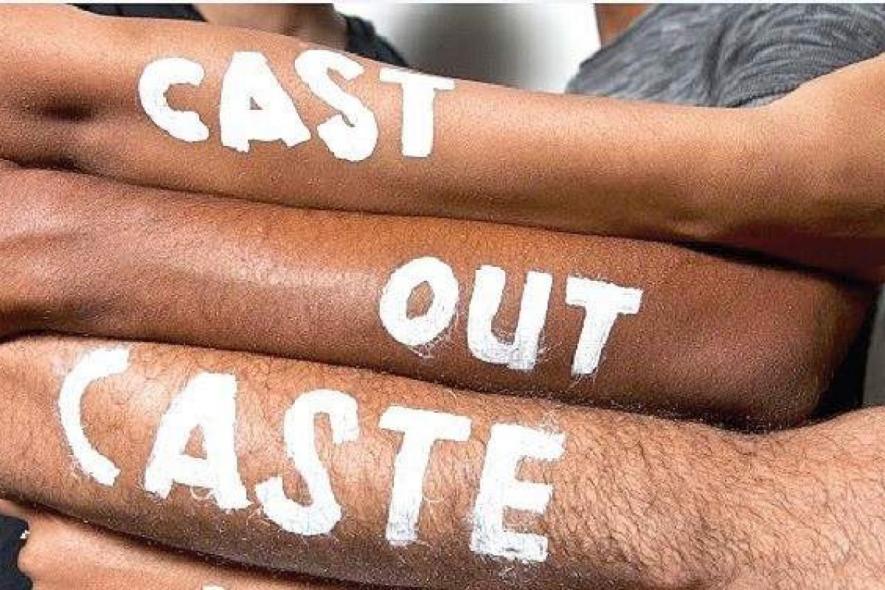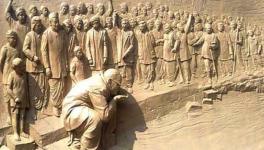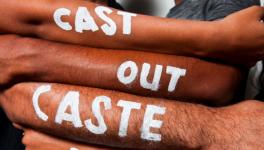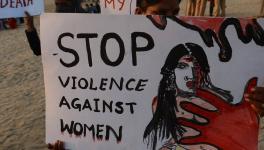What is Similar Between India and Nepal? Dalit Atrocities

Representational image.
On May 23, Nawaraj BK, a young man from Jajarkot district in Nepal, was brutally killed along with five friends and thrown in the Bheri river for wanting to marry a girl of his choice. The young woman, Grishma (name changed), from Rukum in Western Nepal, belonged to the dominant “high” caste. Despite being from different castes, the couple had been in a relationship for two years.
Nawaraj was an athlete and a bright student. He had passed the written exam of Nepal Police and was waiting for the interview. He often used to go to play in Rukum and that is how he met Grishma. She and her younger brother had visited Nawaraj’s home a few times. In the beginning, Nawaraj’s parents believed she was their daughter’s friend. But the girl eventually revealed that she was Nawaraj’s girlfriend. His parents were scared of their growing relationship.
Nawaraj’s father, Mohan Lal Bishwokarma, showed a picture of Grishma and his son to Grishma’s relative, Indra Bahadur Malla, believing that he would inform her family. But Indra replied with a casteist slur, “Oh a ‘Dum’ is daydreaming to be a Thankuri’s father-in-law”.
Although Rukum district is the original stronghold of the former Communist Party of Nepal (Maoist), which believes in a society free of caste discrimination, Mohan was acutely aware of the consequences of inter-caste marriages. He and his wife pressured Nawaraj to break his relationship, because there would be no future after tying the knot with a dominant caste woman.
But the young lovers did not care about caste barriers.
According to news reports, on May 23, Grishma asked Nawaraj to bring a group of friends to help them elope, for she was worried that her family and relatives could attack him. Nawaraj came with 18 friends to Rukum. As soon as Grishma’s mother saw him, she used the same casteist slur and shouted: “‘Dum’ you are here again, aren’t you still afraid of the last beating! Today you won’t leave alive.”
A crowd of more than 50-60 people killed the six youngsters with stones, sickles, sticks and other weapons, then dumped them in the river. Some of the dead bodies were difficult to recognise due to the deep cuts, broken bones and other serious injuries. Lokendra Sunar’s private parts were chopped off, his mother Laxmi Sunar alleged. Violence against dalits often does not end just in death, it also involves mutilation of their bodies.
“Villagers didn’t only kill my son Nawaraj but also his friends who stood for his love,” said Mohan, in a heavy voice. He added, “I saw his bruised dead body in his friend’s clothes with his shoes on although he had many clothes. I wondered why he didn’t wear his [own] clothes?” Later, Mohan came to know of Nawaraj’s strategic move to conceal his identity as a groom in order to avoid a possible attack.
***
India has also witnessed caste killings in the name of honour for very long. The Kaushalya case tells the same story as Nawaraj and Grishma’s. Kaushalya’s husband, Shankar, was killed in the name of honour on 13 March 2016. The coupled had lived away from their family at Uddumalaipettai in Tamil Nadu. While Kaushalya was from the dominant Thevar caste, Shankar was a dalit. Her parents had directed goons to attack Shankar in broad daylight, an incident that was caught on CCTV.
The role of state, police, and judiciary in Kaushalya’s case also resembles its role in the Nawaraj case. From the police’s alignment with the dominant Thevars to the delay and insensitivity of the judiciary, the matter was repeatedly mishandled. 22 June 22, the Madras High Court acquitted Chinnasamy, Kaushalya’s father and the prime accused. Kaushalya found the judgment from the High Court quite unsettling. She says, “As long as I am alive, I will fight for justice. I will live to see justice for Shankar.”
***
Caste plays a significant role in maintaining sexual purity in Hindu society. The rampant violence we witness across South Asia against dalits aims to prevent inter-caste marriages. Sexual violence in particular is inflicted to maintain the “purity” of a high-caste woman’s womb. A sexual relationship with a dalit, even the touch of a dalit, is considered defiling. For this reason, dalits have historically been vulnerable to violence; and transgressing caste through inter-caste marriage has unleashed some of the worst forms of violence against Dalit communities.
In India, the incidence of inter-caste marriage is as low as 10%, while in Nepal there have only been 244 inter-caste marriages in a decade. In Nepal, 56% of inter-caste couples are displaced and 57% are socially boycotted. About 6% are reportedly attacked for their inter-caste marriage, according to one estimate.
Nepal’s Feminist Dalit Organisation or FEDO reports that 729 incidents of rape of women of all castes took place during the nine months from April 2019 to January 2020. Some 154 (21%) of these were of dalit women and girls. Of these, only 15% cases ended in a conviction. Furthermore, 731 cases of violence against women were registered in the district police stations of Province No. 7 between January to September 2019, of which 119 (16.2%) involved dalit victims.
In India, too, dalit women rarely get justice. According to the National Crime Records Bureau, among states, Bihar reports the highest rate of crime against members of the Scheduled Castes (SC) and Scheduled Tribes (ST). The highest number of crimes against SC communities is recorded in Uttar Pradesh, which also accounts for 25.6% of total reported crimes. The rate at which the police file charge-sheets for violence against SCs and STs is 78.3% and 81.3% respectively. This is lower than the national rate of charge-sheeting violence, which is 87.5%. Out of the total crimes committed against Dalits, rape is reported to be the highest in number. Uttar Pradesh reported 14.5% (49,262 out of 3,38,954 cases) of total crimes against women.
Is the justice system in Nepal fair to dalits?
What is most distressing about the Rukum case is how loosely the judiciary discussed it. Mothers are desperate, looking for justice for their sons, and pained to see three people, including the alleged conspirator, Grishma’s mother and the ward chair, being released on bail. Shockingly, a judge asked the dalit prosecutor, Prakash Nepali, during the pleadings: “Does calling someone ‘Dum’ imply caste-based discrimination?” Nawaraj’s mother in a later conversation recalled the defence attorney saying, “‘What else would we call a ‘Dum’ but a ‘Dum’?’” Such statements reflect the caste arrogance that persists in Nepal’s judicial structure.
Nepal’s judiciary and other state institutions lack adequate representation of dalits and women. According to Shyam Bhattarai, joint secretary at the Attorney General’s office, of Nepal’s 519 public prosecutors, only seven (1.3%) are dalits. In 2017-18, there were 394 judges at the Supreme, High, and District Court levels. In these courts, there were 14 women judges, just 3.5% of the total number of judges. Dalit judges were only 0.5% of all judges. Recently, one dalit judge was appointed in the High Court and a dalit woman in the district court. There are no dalit judges in the Supreme Court.
In India, too, the judiciary lacks adequate representation from SC, ST and OBC communities. The way the collegium system works is responsible for this, for it mostly benefits members of elite castes. Out of a total 16,693 judges in the subordinate courts, only 3,973 are SC/ST/OBC. In the Supreme Court, there is one dalit judge out of 31. It is only in 2017 that a dalit judge, Ramkrishna Gavai, found a position in the Supreme Court after nearly a decade.
Dalits are estimated to be 13.8% to 20% of the population of Nepal. Roughly one of every sixth Nepali is a dalit, which is similar to the situation in India. India’s SC population is 16.6% of the total population. According to the 2014 Benchmark Study by Samata Foundation, 43.6% of Hill dalits and 38.2% of Terai dalits are below the poverty line. The national average is 25.2%.
Dalits have 8% representation in Nepal’s Parliament. Currently, there are 26 dalit MPs: 19 in the House of Representatives out of a total 275, and seven (or 11.8%) in the National Assembly. None of the Dalit women are in the National Assembly. There are no directly elected Dalit women MPs either.
A scrutiny of recent reports of dalit atrocities begs a pertinent question: to what extent are dalit lives important in South Asia? Does the gap between constitutional rights and lived realities of dalits not reveal the tokenism with which dalit identity is discussed?
Reclaiming Dalit lives
Stories of atrocities against dalits are limited to news flashes and the occasional Twitter trend. There is a structural denial to resolve the issues that really matter. Dalits are denied emancipation by the failure to recognise caste structures and the violence that is embedded within them. Violence against dalits are most often unleashed when any so-called caste boundary is transgressed—as happened to Nawaraj and Kaushalya. This systemic problem prohibits dalits from retaining a human right as basic as marrying a person of their choice.
We have to seriously understand how the caste system has created and sustained the deeply-entrenched injustice of our social systems. Only this would address the future of over 250 million dalits, by ensuring all Dalit-Bahujans worldwide can reclaim their human dignity.
The prevailing uneasy silence over the violence inflicted against dalits is disturbing. While in and beyond the United States the race question has been taken up even during a harsh pandemic, the caste question is hardly ever addressed. The problem with caste is that it is so enmeshed in everyday social structures in this part of the world that even though it is invisible it keeps on operating. The shared caste consciousness, which allows caste to keep reproducing, needs to be shelved.
The hope for an anti-caste discourse lies in developing a true ally-ship. We need to rework the concept of ally-ship so that it means much more than social networking. A true ally-ship needs a new shared language through which different aspects of the caste question can come together. What we need is a “radical empathy”, something Isabel Wilkerson, the first woman of African-American heritage to win the Pulitzer Prize, has discussed in her recent feature in the New York Times Magazine.
Such an ally-ship—among and beyond dalits—will not only reclaim dalit lives, but restore human dignity. It will ensure that justice for dalits is never again delayed, deferred or denied.
Kalyani is a PhD scholar at the Centre for the Study of Social Systems, Jawaharlal Nehru University, Delhi. Sarita is a writer and board member of the Samata Foundation, a dalit-led research think-tank in Nepal. The views are personal.
Get the latest reports & analysis with people's perspective on Protests, movements & deep analytical videos, discussions of the current affairs in your Telegram app. Subscribe to NewsClick's Telegram channel & get Real-Time updates on stories, as they get published on our website.

















